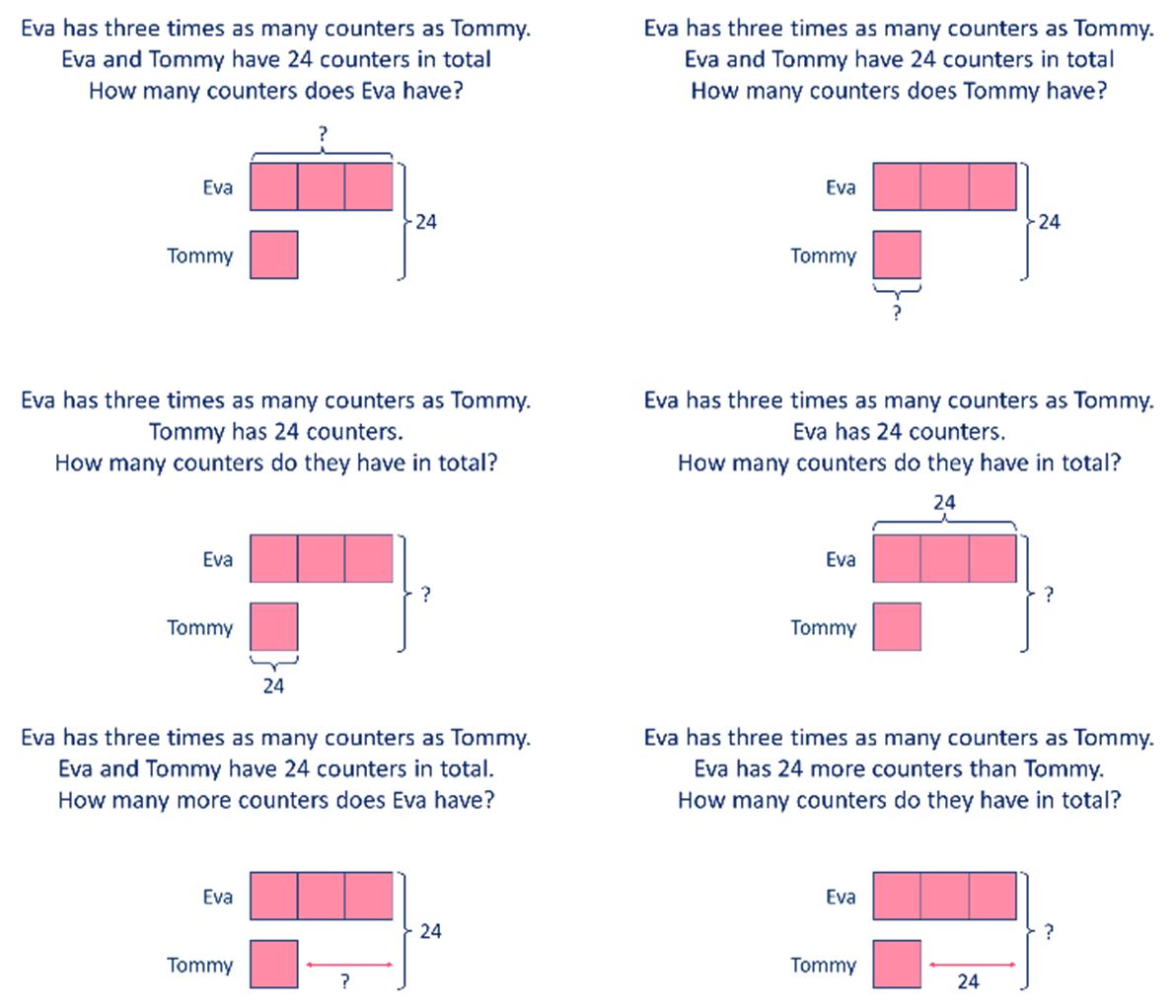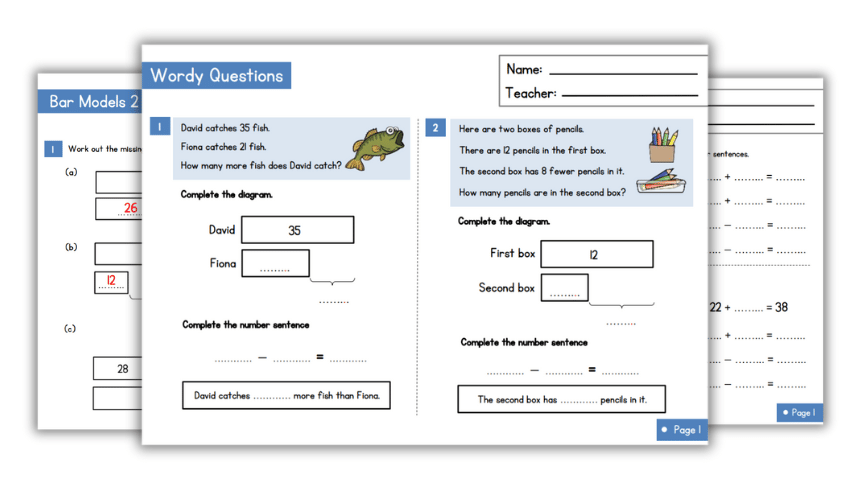Exploring Bar Design Illustration Techniques: A Comprehensive Overview to Picturing Math Concepts
Bar model attracting techniques function as a useful source for both educators and trainees in visualizing mathematical ideas. These models streamline complicated numerical connections, assisting in the comprehension of enhancement, division, reduction, and reproduction. This guide describes effective approaches for carrying out bar versions, cultivating energetic interaction and real-world links. As visitors check out the practical applications and mentor pointers, they will certainly discover just how these techniques can change their method to maths.
Recognizing the Essentials of Bar Model Drawing
Bar model attracting serves as an effective aesthetic tool in maths, helping with the understanding of analytic techniques and mathematical partnerships. This strategy involves representing numbers and their partnerships through rectangle-shaped bars, making it less complicated to envision operations such as addition, reproduction, division, and reduction. Each bar's size corresponds to a details worth, enabling learners to compare amounts and comprehend proportions plainly.
To produce a bar design, one starts by identifying the issue's essential aspects, typically damaging it down right into parts that can be aesthetically represented. As an example, in a straightforward addition trouble, 2 bars can be drawn, with their lengths representing the addends. The consolidated length highlights the amount. Furthermore, bar designs can be adapted for much more complex problems, consisting of fractions and proportions, by adjusting the bars appropriately. Understanding these essentials lays a strong structure for efficient analytic and much deeper mathematical understanding.
Benefits of Using Bar Models in Mathematics
Making use of bar designs in maths uses numerous benefits that improve understanding and understanding. These graphes help pupils in comprehending complicated ideas by breaking them down right into manageable elements. Bar models supply a clear framework for illustrating relationships between numbers, making abstract concepts much more concrete. They promote a deeper understanding of mathematical procedures and assist in problem-solving by enabling learners to envision the data they are functioning with.
In addition, bar designs sustain the development of essential thinking skills, as trainees should analyze and translate the aesthetic details to reason. This technique motivates active involvement with the material, strengthening retention and mastery of mathematical concepts. By promoting a solid foundation in visual literacy, bar versions encourage students to approach numerous mathematical obstacles with self-confidence. On the whole, the combination of bar designs right into mathematics education and learning confirms advantageous in growing both understanding and analytical abilities among pupils.
Applying Bar Versions to Enhancement and Reduction
Bar versions serve as an effective tool for aesthetically representing addition and subtraction issues. By highlighting the connection in between numbers, they enhance understanding and help with problem-solving. On top of that, real-life applications of these versions can help students comprehend mathematical ideas in functional contexts.
Representing Addition Aesthetically
Aesthetic help can significantly enhance their understanding of these operations when pupils encounter enhancement and reduction issues. Bar models function as efficient tools for standing for addition. By dividing a rectangular shape into sectors that correspond to the numbers involved, trainees can envision the connection in between the quantities. For example, if a pupil needs to add 3 and 5, they can produce a bar divided into two areas: one area representing 3 and the other standing for 5. This clear representation not just streamlines the addition process yet additionally reinforces the idea of combining amounts. As trainees adjust these aesthetic help, they establish a deeper comprehension of addition, leading to boosted problem-solving abilities and greater self-confidence in their mathematical abilities.
Subtraction With Bar Models
Reduction is usually perceived as a more intricate procedure than enhancement, bar models can properly clarify this process for students. By aesthetically representing the amounts involved, students can better comprehend just how numbers associate with one an additional. In a bar model for subtraction, one bar stands for the total amount, while one more shows the amount being subtracted. This visual difference helps students understand the principle of "eliminating." For example, if a bar reveals 10 units, and an additional bar representing 4 devices is eliminated, students can conveniently see that 6 systems remain. This method not just promotes understanding of reduction however additionally help in establishing analytical abilities, permitting trainees to envision their mathematical reasoning and improve their total understanding of mathematical ideas.
Real-Life Application Examples
Recognizing subtraction via bar models lays a foundation for using these methods in real-life circumstances. In numerous contexts, such as budgeting or buying, people can envision just how much cash stays after expenditures. If a person has $50 and spends $20, a bar design can stand for the total amount and the invested portion, highlighting that $30 is left. In addition, moms and dads can utilize bar models to aid kids comprehend the number of even more products need to be included in finish a collection, such as having 3 apples and requiring five. This aesthetic depiction simplifies complicated troubles, assisting in understanding and retention. Ultimately, bar versions function as reliable tools in daily decision-making, improving mathematical understanding in functional circumstances.
Imagining Multiplication and Department With Bar Models
In exploring the application of bar designs for reproduction and division, it is vital to understand their foundational principles. Building multiplication designs permits learners to picture partnerships in between numbers, while effective department techniques can be shown via these visual aids. This technique improves comprehension and analytic skills in mathematics.
Comprehending Bar Designs
Bar models offer as a powerful aesthetic tool for highlighting the principles of multiplication and department. They enable learners to represent mathematical connections in a structured format, helping with a deeper understanding of these procedures. In reproduction, bar versions present groups of equal dimension, enabling people to visualize the overall quantity when combining these groups. Alternatively, in department, bar designs help depict just how a total is divided into smaller, equivalent parts, clarifying the idea of dividing. By utilizing these visual help, pupils more info can comprehend the underlying concepts of multiplication and department better. This technique not only enhances comprehension yet additionally supports analytic abilities, making bar designs an invaluable asset in mathematical education.
Constructing Reproduction Designs
Constructing reproduction models utilizing bar representations provides a clear method for picturing the procedure of reproduction. These models make it possible for learners to represent reproduction as groups of equivalent components, making abstract principles extra concrete. To show (3 times 4), a pupil can attract one bar divided into three equal segments, each standing for 4 units. Furthermore, developing a 2nd bar with the exact same length reinforces the understanding of repeated enhancement, as each sector represents one group. This graph not only aids in comprehending multiplication however additionally improves analytical skills. By employing bar versions, trainees can better comprehend connections between numbers and develop a robust foundation for much more complex mathematical concepts, causing boosted confidence in their capabilities.
Imagining Division Approaches

Addressing Word Issues Utilizing Bar Version Techniques

For instance, in a problem involving addition and subtraction, pupils can attract different bars for each and every amount and after that manipulate them to find the remedy. This process not just clears up the trouble however additionally promotes a much deeper theoretical understanding. Moreover, bar designs can be adjusted for numerous sorts of word issues, making them flexible across different mathematical subjects. Inevitably, making use of bar designs can greatly boost students' problem-solving abilities by offering a clear aesthetic pathway to arrive at the appropriate response.
Integrating Bar Models in Different Math Topics
Bar designs can be flawlessly incorporated into numerous mathematics topics, boosting trainees' understanding of ideas past standard math. In algebra, these visual devices aid in standing for inequalities and formulas, enabling learners to visualize connections in between variables. When taking on geometry, bar models can highlight the properties of forms and spatial thinking, assisting trainees comprehend principles like location and boundary successfully. In data, bar versions facilitate the analysis of data sets, permitting pupils to compare quantities and identify trends aesthetically. Additionally, incorporating bar designs within measurement topics help in recognizing systems and conversions by supplying a substantial representation of amounts. By employing bar designs across different mathematical locations, teachers can cultivate a deeper comprehension of intricate concepts, thereby enhancing analytic abilities and promoting important reasoning (bar model drawing techniques). This convenience shows the utility of bar designs as a fundamental device for trainees in their mathematical trip
Tips for Training Bar Versions Effectively
Incorporating bar designs right into teaching practices needs thoughtful strategies to maximize their effectiveness. Educators must begin by presenting bar versions with simple, relatable examples that pupils can quickly comprehend. This helps to build confidence and knowledge with the idea. Progressively increasing the intricacy of problems enables learners to use their skills gradually. In addition, teachers should urge pupils to develop their very own bar models, advertising active engagement and possession of their discovering.
Including collaborative activities can likewise improve understanding, as students go over and fix problems in teams. Continual responses is crucial; instructors should give useful discourse on pupils' bar design depictions to lead enhancement. Finally, attaching bar designs to real-life situations enhances their significance, aiding pupils see the functional applications of their mathematical skills. By executing these approaches, educators can successfully harness the power of bar versions in their mathematics instruction.
Regularly Asked Inquiries
Can Prevent Versions Be Used in Various Other Topics Besides Math?
Bar models can certainly be utilized in numerous subjects past mathematics. They efficiently illustrate ideas in scientific research, social researches, and language arts, helping to aesthetically stand for connections, procedures, and ideas for boosted understanding throughout techniques.
What Age Group Is Ideal Suited for Learning Bar Models?
Bar models are best fit for kids ages 7 to 12, as they establish concrete reasoning abilities throughout this duration (bar model drawing techniques). At this age, trainees can effectively comprehend abstract principles via aesthetic depiction and problem-solving techniques
Exist Digital Equipment for Creating Bar Models?

How Can I Assess Pupil Understanding of Bar Designs?
Assessing pupil understanding of bar models can involve quizzes, empirical assessments, and seminar. Educators could likewise analyze trainees' finished designs and their capability to describe their thinking, making sure an extensive examination of understanding.
What Prevail Blunders When Using Bar Models?
Typical mistakes when using bar designs consist of misstating amounts, falling short to accurately classify bars, perplexing enhancement and subtraction, ignoring to utilize regular ranges, and forgeting the relevance of clear visual separation in between different components.
In addition, bar models can be adjusted for much more intricate problems, including fractions and proportions, by readjusting the bars as necessary. Subtraction is usually viewed as an extra intricate operation than addition, bar designs can effectively clarify this process for pupils. In a bar model for reduction, one bar represents the total amount, while one more shows the quantity being deducted. If a bar shows 10 units, and an additional bar representing 4 units is gotten rid of, trainees can easily see that 6 devices remain. When splitting a total into equal groups, trainees can draw a long bar to stand for the entire and after that section it into smaller bars that indicate each team.